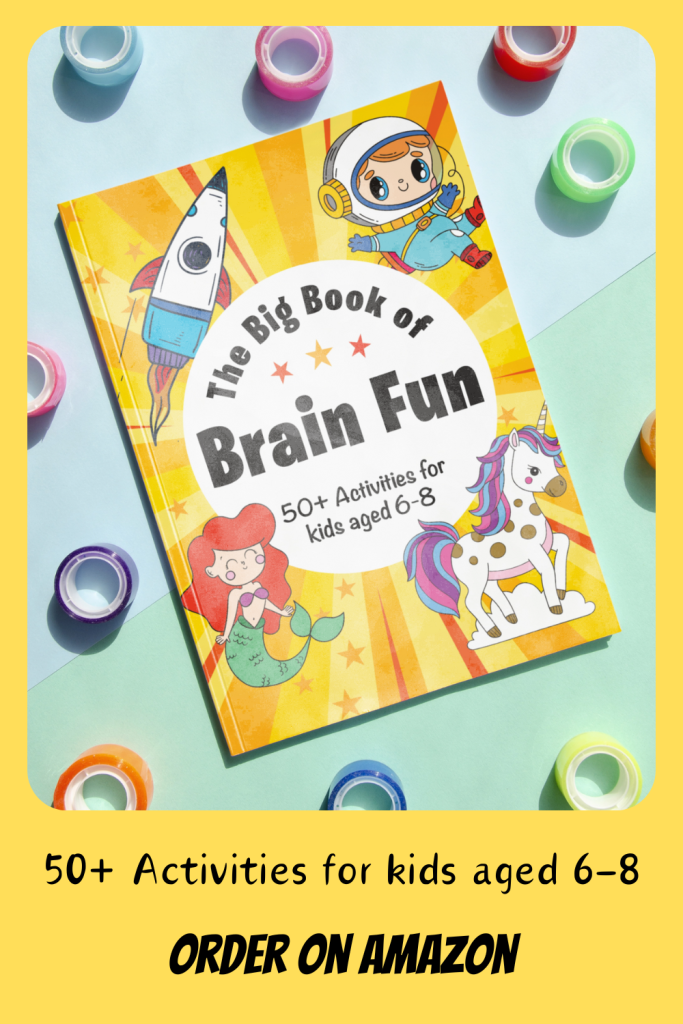In the digital age, technology has become an inseparable part of our children’s lives. From interactive tablets to coding kits, tech gifts for kids are more popular than ever. But as parents and caregivers, we often find ourselves wondering: how can we choose tech gifts that are both engaging and educational, while also managing screen time effectively? This comprehensive guide will help you navigate the world of tech gifts for kids, ensuring that you select presents that promote learning and development without compromising on fun or health.
What are the benefits and risks of tech gifts for kids?
Before we delve into specific gift ideas, it’s crucial to understand both the advantages and potential drawbacks of introducing technology to children.
Benefits:
- Enhanced learning opportunities: Tech gifts can provide interactive and engaging ways for kids to learn new concepts. According to a study by the Joan Ganz Cooney Center, educational apps can improve children’s vocabulary by up to 31% in just two weeks. This significant boost in learning efficiency demonstrates the potential of well-designed educational technology.
- Development of digital literacy skills: In an increasingly digital world, early exposure to technology helps children develop essential skills they’ll need in the future. The World Economic Forum predicts that 65% of children entering primary school today will ultimately work in job types that don’t yet exist, many of which will require strong digital skills. By introducing tech gifts, we’re preparing our children for this digital future.
- Preparation for a tech-driven future: Familiarity with technology from a young age can give children a head start in understanding and adapting to future technological advancements. This early exposure can foster a sense of confidence and competence in using digital tools, which will be invaluable in their future academic and professional lives.
- Personalized learning experiences: Many educational tech gifts offer adaptive learning experiences that cater to a child’s individual pace and style of learning. This personalization can lead to more effective and enjoyable learning experiences.
Risks:
- Excessive screen time: The American Academy of Pediatrics recommends no more than 1-2 hours of screen time per day for children over 2 years old. Overuse of tech devices can lead to various issues, including sleep problems, reduced physical activity, and potential impacts on social skills development.
- Potential for addiction: A 2019 study published in JAMA Pediatrics found that excessive screen time can change the structure of children’s brains, potentially leading to lower cognitive and language test scores. It’s crucial to monitor and moderate children’s use of technology to prevent addictive behaviors.
- Reduced physical activity and social interaction: Too much focus on tech devices can limit children’s engagement in physical play and face-to-face social interactions, which are crucial for their overall development. Balancing tech use with other activities is key to healthy development.
- Exposure to inappropriate content: Without proper supervision and controls, children may be exposed to content that’s not age-appropriate or potentially harmful. It’s essential to implement robust parental controls and maintain open communication about online safety.
How can we choose age-appropriate tech gifts?
When selecting tech gifts for kids, it’s essential to consider their age and developmental stage. Here are some age-appropriate categories to consider:
Preschoolers (3-5 years)
- Interactive learning tablets: Devices designed specifically for young children, offering educational games and activities that help develop early literacy and numeracy skills.
- Simple coding toys: Products that introduce basic programming concepts through hands-on play, fostering logical thinking and problem-solving skills.
- Digital art tools: Devices that allow kids to explore creativity while developing fine motor skills, encouraging artistic expression in a digital medium.
Tip: For this age group, prioritize durability and simplicity in design. Look for devices with large buttons, intuitive interfaces, and robust build quality to withstand the sometimes rough handling by young children.
Elementary School (6-12 years)
- Educational gaming consoles: Systems that combine the fun of gaming with hands-on learning, often incorporating subjects like math, science, and language arts into engaging gameplay.
- Introduction to robotics kits: Sets that offer engaging ways to learn coding and robotics basics, promoting STEM skills and fostering an interest in technology and engineering.
- Kid-friendly smartwatches: Devices that provide fun features while teaching time management and offering a controlled introduction to digital communication.
- Digital microscopes or magnifiers: Tools that encourage scientific exploration and observation, perfect for budding naturalists and scientists.
Tip: As children in this age group become more independent, look for devices that offer parental controls while still providing a sense of autonomy. This balance can help teach responsible tech use.
Teenagers (13-18 years)
- Laptops for schoolwork and creativity: Devices that can support teens in their studies and creative pursuits, preparing them for higher education and future careers.
- Advanced coding and STEM kits: More complex programming and electronics project sets that challenge teens and develop higher-level problem-solving skills.
- Virtual reality educational experiences: VR headsets with educational content that can provide immersive learning experiences in subjects like history, science, and geography.
- Digital content creation tools: Software or hardware that allows teens to explore interests in areas like video production, music creation, or graphic design.
Tip: For teens, consider gifts that align with their specific interests or career aspirations. This age group often appreciates tech that feels “grown-up” and can be used for real-world applications.
How can parents ensure tech gifts promote learning?
To maximize the educational value of tech gifts, consider the following factors:
- Educational content and apps: Look for devices and software that offer a good balance of entertainment and education. Seek out apps that teach math, spelling, problem-solving skills, and other educational topics. The quality of the content is crucial – look for apps developed by educational experts or those with positive reviews from teachers and parents.
- Parental controls and time management features: Choose devices with robust parental controls that allow you to manage content access and screen time. These features should be easy to set up and adjust as your child grows and develops.
- Collaborative and interactive elements: Opt for tech gifts that encourage social interaction and collaborative play, such as multiplayer educational games or projects that can be shared with friends or family members.
- Regular updates and expanding content: Consider platforms or devices that offer regular updates or new content. This ensures that the educational value of the gift continues to grow with your child.
- Alignment with school curriculum: Some educational tech gifts are designed to complement school curricula. These can be particularly valuable in reinforcing classroom learning and providing additional practice in key subject areas.
Tip: Always research the educational value and age-appropriateness of tech gifts before purchasing. Look for reputable review sites that offer detailed evaluations of children’s tech products. Organizations like Common Sense Media provide comprehensive reviews that can help guide your choices.
What strategies can parents use to balance screen time?
While tech gifts can be valuable tools for learning, it’s crucial to manage screen time effectively. Here are some strategies to help maintain a healthy balance:
- Set clear guidelines and time limits: Establish and communicate clear rules about when and for how long tech devices can be used. The American Academy of Pediatrics suggests creating a family media plan to help structure tech use. This plan should be age-appropriate and flexible enough to adapt as your child grows.
- Use built-in parental controls and monitoring apps: Take advantage of features provided by device manufacturers and operating systems to set limits and monitor usage. Many devices now offer detailed reports on app usage, allowing parents to make informed decisions about their child’s tech habits.
- Encourage tech-free activities and family time: Designate specific times for non-digital activities, such as outdoor play, reading physical books, or family board game nights. This helps ensure a well-rounded childhood experience and prevents over-reliance on technology for entertainment.
- Model healthy tech habits: Children often mimic their parents’ behavior. By demonstrating responsible tech use yourself, you can set a positive example for your children to follow.
- Create tech-free zones: Designate certain areas of your home, such as the dinner table or bedrooms, as tech-free zones. This can help prevent tech use from interfering with important family interactions or sleep routines.
- Encourage active screen time: When children do use tech devices, encourage activities that require movement or interaction, such as motion-controlled games or educational apps that involve physical activities.
- Regularly review and adjust rules: As your child grows and technology evolves, regularly reassess and adjust your family’s tech use rules. Involve your children in these discussions to help them understand the reasoning behind the rules and develop their own sense of responsible tech use.
What are some popular categories of educational tech gifts?
When shopping for tech gifts, consider these popular categories that blend education with entertainment:
- Robotics and Coding Kits: These teach programming, logic, and engineering principles through hands-on building and coding activities.
- Interactive Globes: Combine physical objects with digital information to teach geography, culture, and global awareness in an engaging way.
- Digital Microscopes: Encourage scientific observation and exploration, perfect for nurturing an interest in biology and the natural world.
- Educational Gaming Systems: Blend entertainment with learning across various subjects, making education feel like play.
- Building and Engineering Sets: Promote STEM skills through hands-on construction and problem-solving, often incorporating digital elements for design or control.
- Language Learning Devices: Support language acquisition through interactive audio and visual learning, often using games and challenges to make learning fun.
- 3D Printing Kits: Introduce concepts of design, engineering, and manufacturing, allowing kids to bring their ideas to life in three dimensions.
- Augmented Reality Learning Tools: Provide immersive experiences in subjects like science and history, bringing textbook concepts to life.
- Digital Art and Music Creation Tools: Foster creativity and artistic skills using digital mediums, helping kids explore their artistic potential.
- Educational Tablets and Computers: Offer a wide range of learning apps and activities, serving as versatile platforms for various educational pursuits.
How should parents introduce new tech gifts to kids?
When presenting a new tech gift to your child, follow these steps to ensure a positive and educational experience:
- Set up the device together: This process can be a learning opportunity in itself, teaching kids about technology setup and configuration. It also allows you to ensure that appropriate safety settings are in place from the start.
- Explore features and educational content as a family: Spend time together discovering the device’s capabilities and educational apps. This shared experience can help you guide your child’s use of the technology and creates an opportunity for family bonding.
- Establish rules and expectations for usage: Clearly communicate when and how the device can be used, setting the foundation for responsible tech use. Consider creating a “tech contract” with your child that outlines these rules and expectations.
- Demonstrate educational applications: Show your child how to use the device for learning. This might involve exploring educational apps together or demonstrating how to research topics for school projects.
- Encourage creative uses: Brainstorm with your child about creative ways to use the tech gift. This could involve creating digital art, composing music, or even starting a blog or YouTube channel (with appropriate supervision).
- Schedule regular check-ins: Plan to regularly discuss your child’s use of the device. This opens up opportunities to address any concerns, celebrate learning achievements, and adjust usage rules as needed.
What eco-friendly and sustainable tech gift options are available?
As we become more environmentally conscious, consider these eco-friendly tech gift categories:
- Refurbished devices: Many manufacturers offer certified refurbished products that work like new but have a smaller environmental impact. These can be an excellent way to introduce higher-end technology at a lower cost, both financially and environmentally.
- Solar-powered gadgets: Toys and devices that teach about renewable energy while providing hands-on STEM learning. These gifts can help foster an early understanding of sustainable energy sources.
- Tech made from recycled materials: Look for products that use recycled materials in their construction. This can include everything from the device itself to its packaging.
- Energy-efficient devices: Choose products with good energy ratings. Many modern devices are designed to be more energy-efficient, reducing their environmental impact over time.
- Modular tech gifts: Some tech products are designed to be easily upgraded or repaired, extending their lifespan and reducing electronic waste.
What does the future hold for educational technology?
As technology continues to evolve, so do the possibilities for educational tech gifts. Here are some exciting trends to watch:
- AI-powered personalized learning: Adaptive learning platforms that use artificial intelligence to tailor content to each child’s needs are becoming more sophisticated. These systems can identify areas where a child needs more practice and adjust the difficulty of tasks accordingly.
- Augmented reality educational experiences: AR apps and devices are creating immersive learning environments that bring subjects like history and science to life. Imagine pointing a device at a historical landmark and seeing it as it looked centuries ago, or exploring the human body in 3D.
- Advanced STEM kits for real-world problem-solving: Future tech kits may focus on tackling global challenges, encouraging kids to apply their STEM skills to issues like climate change or sustainable agriculture. This approach not only teaches valuable skills but also fosters a sense of global citizenship.
- Emotional intelligence and social skills development: As we recognize the importance of emotional intelligence, future tech gifts may incorporate features to help children develop empathy, communication skills, and social awareness.
- Gamification of real-world skills: Educational technology may increasingly use game-like elements to teach real-world skills such as financial literacy, time management, or even coding.
Conclusion
Tech gifts for kids offer exciting opportunities for learning and growth, but it’s essential to approach them thoughtfully. By choosing age-appropriate, educational tech gifts and implementing strategies to balance screen time, you can help your child reap the benefits of technology while avoiding potential pitfalls.
Remember, the most valuable gift you can give alongside any tech product is your time and engagement. By exploring and learning together, you can turn these tech gifts into powerful tools for education, creativity, and family bonding.
As we navigate this digital landscape, let’s embrace the potential of technology to enrich our children’s lives while maintaining a healthy balance with the physical world around them. With thoughtful selection and guided use, tech gifts can open up new worlds of learning and discovery for kids of all ages.
FAQs
What's the recommended daily screen time for kids?
The American Academy of Pediatrics recommends no screen time for children under 18 months (except video chatting), 1 hour per day of high-quality programs for children 2-5 years, and consistent limits for children 6 and older. However, these are guidelines, and the quality of screen time is as important as the quantity.
How can I protect my child's privacy when using tech gifts?
Use strong passwords, enable privacy settings, teach your child about online safety, and monitor their online activities. Always review the privacy policies of apps and devices before use. Consider using a family password manager to help maintain secure and unique passwords across devices.
Are there any tech gifts that promote physical activity?
Yes! Consider active gaming systems or augmented reality games that encourage outdoor exploration and movement. Some smartwatches for kids also include features that encourage physical activity through challenges and rewards.
What should I do if my child becomes too attached to a tech device?
Set clear boundaries, offer alternative activities, and model healthy tech use yourself. If concerns persist, consult with a pediatrician or child psychologist. It may be helpful to gradually reduce screen time and replace it with other engaging activities.
How often should I update or replace educational tech gifts?
This depends on the device and your child’s needs. Generally, aim to update software regularly for security and new features. Replace hardware when it no longer supports current educational apps or your child’s learning needs. Some families find an annual review of tech gifts helpful in assessing whether they still serve their educational purpose.
Remember, technology is a tool, and its value lies in how we use it. By making informed choices about tech gifts for kids and guiding their use, we can help our children learn, grow, and prepare for a digital future while maintaining a healthy balance with the physical world around them.








0 Comments